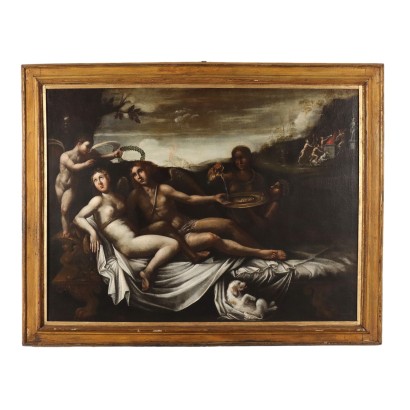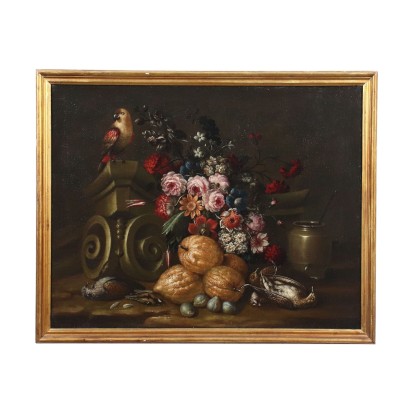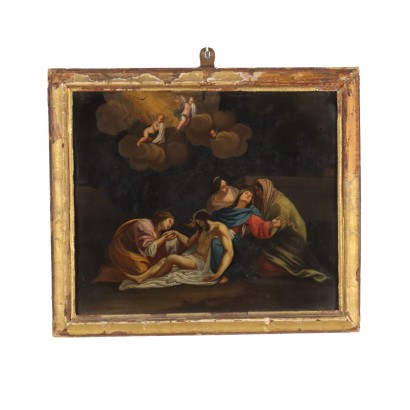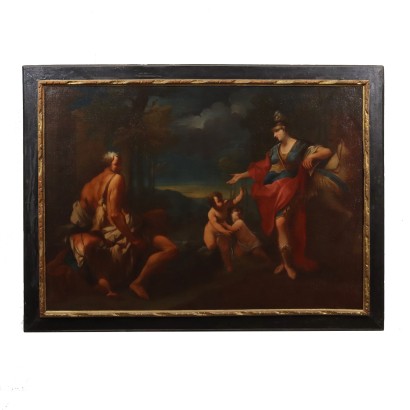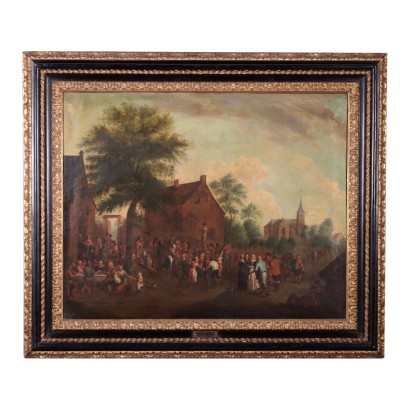ARARPI0148941
Louis Dorigny Attr. Oil on Canvas France XVII-XVIII Century
Erminia among the Shepherds
Oil on canvas. The large canvas recounts an episode taken from the Gerusalemme Liberata by Torquato Tasso, in which the young Erminia, princess of Antioch secretly in love with Tancredi, witnesses the wounding of her beloved in a duel. Driven by love, she therefore wears the weapons of the warrior Clorinda, her close friend, and at night she goes out to reach her beloved Tancredi and heal him. But in the Christian camp a ray of moonlight illuminates her and, mistaken for Clorinda by the sentries, she is forced to make a hasty flight: this is how it happens in a village inhabited by shepherds who live far from the war in an idyllic space, where she asks and obtains to be hosted for some time in the (vain) hope of forgetting her unhappy love. The work, already attributed to Carlo Loth, is rather referable to the production of Louis Dorigny, the Parisian painter who lived for a long time in Italy, in Rome, in Venice and finally definitively in Verona, where he obtained numerous orders from Veronese but also from clients. Venetians and Lombards, extending his activity as a fresco painter from Bergamo to Udine. In Verona since the beginning of the century, the preferences in the field of painting went towards a complex classicistic language in the composition, but calm and elegant, even in the great decorative works. Dorigny conforms to this painting, who in this canvas combines the balanced classicism of Simon Vouet (of whom he was grandson) with the chiaroscuro he learned in Rome and the calm Venetian elegance. Restored and relined, the painting is presented in an early 20th century frame.





